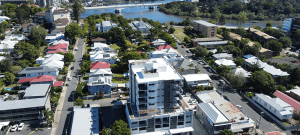Queensland’s population patterns are undergoing a fascinating shift, with an increasing number of people opting for coastal living. The Sunshine Coast and Gold Coast have emerged as prime destinations for those seeking a serene and vibrant lifestyle. This influx of residents has led to a significant housing shortfall in these regions, making them a prime target for property investors. In this blog post, we will explore the value of investing in both existing properties and new developments in areas such as the Sunshine Coast and its neighbouring regions.
Queensland’s Population Patterns: Exploring the Ever-Changing Migration Landscape
Introduction
Queensland, known as the Sunshine State, boasts a diverse and vibrant population spread across its expansive regions. As we delve into the intricacies of population patterns, it becomes evident that internal migration plays a significant role in shaping the distribution of inhabitants. While the state’s capital city, Brisbane, remains a prominent focal point, it may surprise many to learn that the real magnet lies beyond its city limits. In this blog post, we will explore the fascinating population trends, the allure of regional Queensland, and how internal migration continues to impact the state’s demographic landscape.
The Regional Attraction
More than half (52 percent) of Queensland’s population resides in the various regions that stretch across the state. From the tropical north in Cairns and Townsville to the central coast cities of Mackay, Rockhampton, and Gladstone, Queensland’s regional diversity is undeniable. The picturesque Wide Bay region, with its towns like Hervey Bay, Bundaberg, Maryborough, and Gympie, adds to the state’s rich tapestry.
The Brisbane Concentration
If we draw an imaginary circle with a 20-kilometre radius around the Brisbane CBD, we find that 24 percent of Queensland’s entire population resides within its bounds. Another 24 percent can be found 20 to 35 kilometers away from the capital city, in areas such as Moreton Bay, Logan, Redlands, and Ipswich. Surprisingly, this inner circle has seen a decline in population due to internal migration, with approximately 8,000 people leaving over the last decade.
The Magnets of Migration
For over a century, Queensland has been a magnet for internal migration, attracting people from various parts of Australia. However, Brisbane is not the primary allure for migrants, as one might assume. In recent years, the Sunshine Coast and Gold Coast have emerged as the biggest drawcards, surpassing the capital city. Hervey Bay also stands out as an attractive destination for those seeking a coastal lifestyle.
A Changing Trend
The COVID-19 pandemic caused a seismic shift in migration patterns, impacting cities and regional areas differently. During the pandemic, many regional dwellers chose to stay put, resulting in decreased net migration to these areas. However, as life returned to normalcy, internal migration to Queensland resumed its course, with the Sunshine Coast experiencing the most significant influx of people, as reported by the Regional Australia Institute (RAI).
Sydney and Melbourne Lose, Queensland Gains
The RAI’s analysis of Commonwealth Bank data revealed that while cities like Sydney and Melbourne were still witnessing population losses, regional areas in Queensland, particularly Townsville, experienced a surge in arrivals. Townsville’s internal net migration saw a remarkable six-fold increase, primarily driven by people moving from other regional areas. In fact, five of the top 10 most popular migration destinations were located in Queensland.
Shifting Trends and Return to Cities
Despite the Sunshine Coast and Gold Coast’s initial dominance as preferred destinations for internal migration, recent data suggests a slight decline in their popularity compared to previous years. The Gold Coast, in particular, saw a substantial 64 percent decrease in migration, while the Sunshine Coast witnessed a milder 10 percent decline. Simultaneously, capital cities experienced an increase of 7.9 percent in migration to regional areas.
Thriving Regional Powerhouses
Among the regional powerhouses, Townsville stands out due to its thriving sectors such as defense, manufacturing, construction, and agriculture. These industries act as a magnet, attracting both urban dwellers and people from other regional areas. The potential for career growth and a high-quality lifestyle in regional Queensland has become an irresistible proposition for many.
Investing in New Developments:
To address the growing housing shortage and cater to the preferences of modern homebuyers, building new properties in regions like Hervey Bay and the Sunshine Coast proves to be a strategic move. As the demand for housing outstrips supply, constructing new properties can help alleviate the housing crunch while meeting the needs of the growing population. Moreover, this provides an opportunity for developers to create innovative, sustainable, and attractive living spaces that complement the natural beauty of the coastal landscapes. By investing in the construction of new properties, you can contribute to the sustainable growth of these regions while reaping the rewards of a burgeoning real estate market.
Conclusion
Queensland’s population patterns have undergone significant transformations in recent years, with internal migration playing a pivotal role in reshaping the state’s demographic landscape. While the allure of Brisbane’s urban lifestyle continues, it is the coastal regions and other regional areas that are experiencing a surge in new residents. As we observe the ebb and flow of migration trends, it is clear that Queensland’s regions hold untapped potential for those seeking a new life away from the bustling cities. With thriving economies, stunning landscapes, and a warm community spirit, regional Queensland continues to shine as a beacon for those looking to embrace a fresh start.










